Poor Ophelia. Life wasn’t kind to you. And by life, I mean Hamlet—or rather, Shakespeare, because he’s the one who gave you so few lines to speak, so little personality. Faded, lost, mad, drowned. No wonder painters couldn’t stop painting you—who doesn’t love a tragic ingenue? In the words of your brother: “Thought and affliction, passion, hell itself, She turns to favor and to prettiness.”
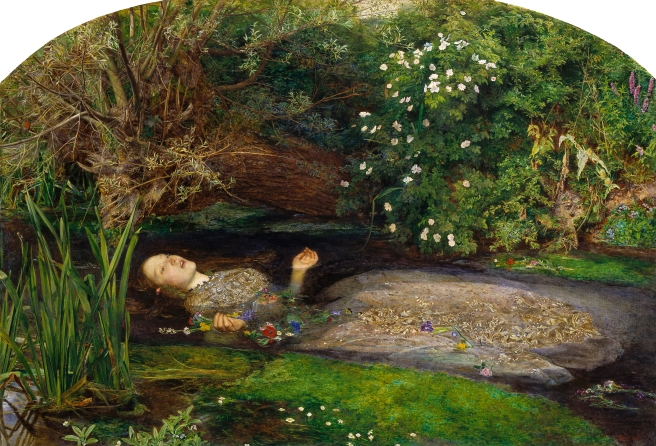 Your youth and beauty made madness appealing and your virginity made it all the more intoxicating. Artists went wild, turning your tragic character into fodder for their romantic paintings. This (above) is perhaps the best known Ophelia image, pained by John Everett Mills in 1852. It even inspired my own flower-bathing experience.
Your youth and beauty made madness appealing and your virginity made it all the more intoxicating. Artists went wild, turning your tragic character into fodder for their romantic paintings. This (above) is perhaps the best known Ophelia image, pained by John Everett Mills in 1852. It even inspired my own flower-bathing experience.
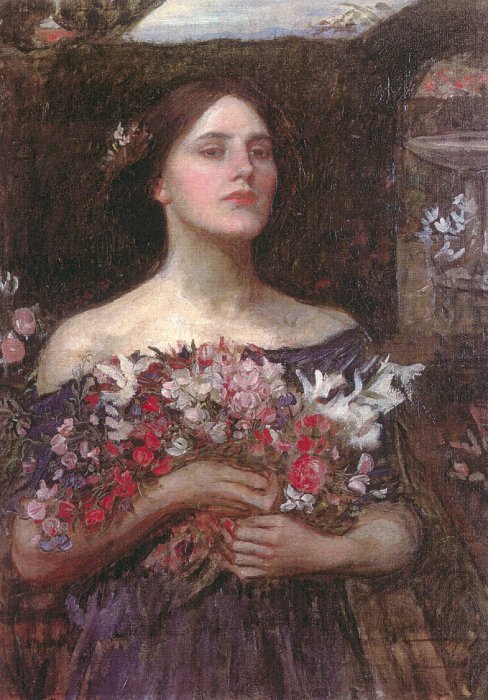
Here is Ophelia looking alive and rosy, holding some posies. I love the expression on her face here—she looks strong, almost defiant. This painting is titled “Gather Ye Rosebuds or Ophelia,” which references both the famous Robert Herrick poem and Shakespeare’s doomed character for a lit nerd double-hitter.
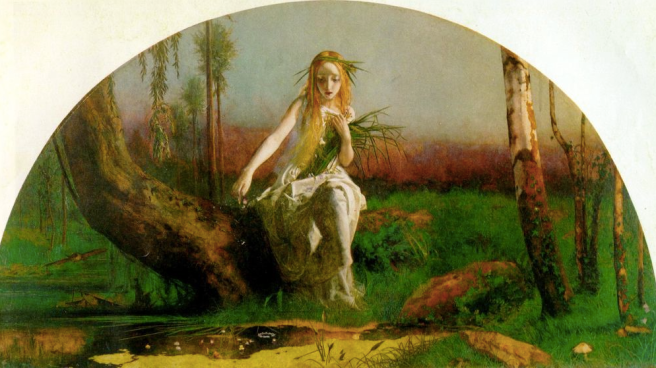
While not as famous as many of the other Ophelia depictions, this painting by Arthur Hughes is my personal favorite. She looks so frail and so childlike. Look at that vibrant, sinister, poisonous green! And the cute little toadstool. I find this piece enchanting and strange in a surprisingly modern way (doesn’t it look like it could be by a contemporary artist?). Also, do you ever wonder why Ophelia is always depicted with flowers? It’s not just because she’s a wilted, fragile symbol of femininity…
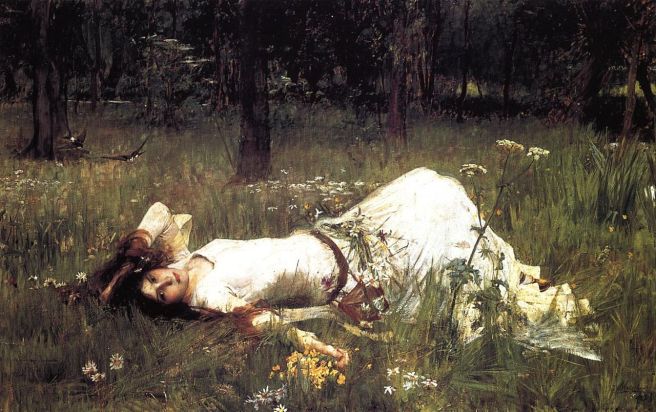
Ophelia had relatively few lines in Hamlet, but her madness is marked by gibbering about flowers, herbs, and their meanings. She sings and babbles to her brother Laertes:
“There’s rosemary, that’s for remembrance. Pray you, love, remember. And there is pansies, that’s for thoughts… There’s fennel for you, and columbines.—There’s rue for you, and here’s some for me. We may call it “herb of grace” o’ Sundays.—Oh, you must wear your rue with a difference.—There’s a daisy. I would give you some violets, but they withered all when my father died.”
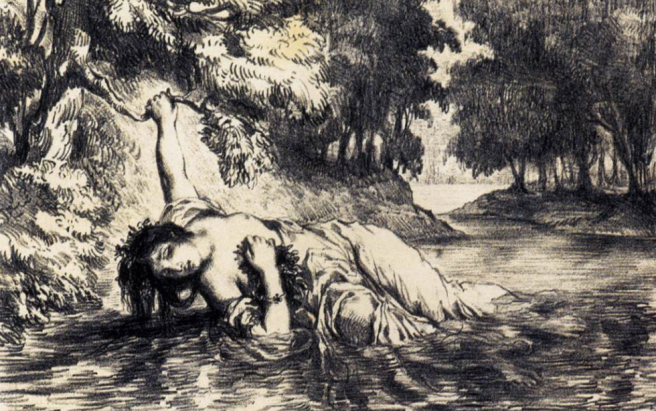
There are some modern renditions of Ophelia, but she seemed to be most popular during the mid-1800s, which makes perfect sense. This was a time of Romanticism and Impressionism, of experimenting with new forms while reawakening old stories.
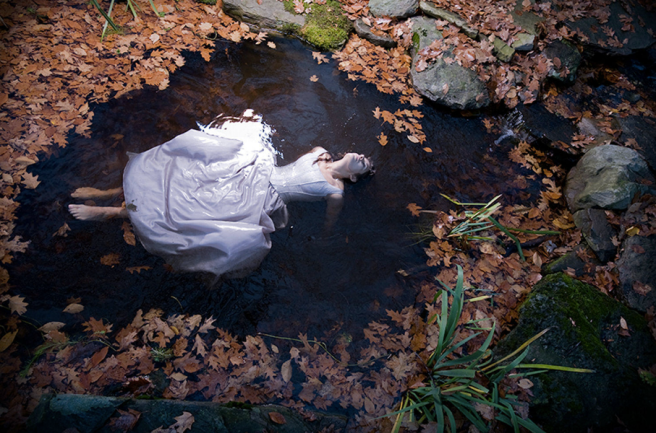
The rich visual language of Ophelia creates an instantly recognizable figure. Who else would be swathed in a white dress, floating in water, surrounded by greenery and flowers? Contemporary artists seem to prefer to photograph Ophelia rather than paint her. It’s an easy shoot to set up, and the results are made all the more dramatic by the literary references. (Plus her fate is really tailor-made for modern feminists, since her madness is predicated by a very real virgin/whore dichotomy set up by her father and her lover. Ouch.)
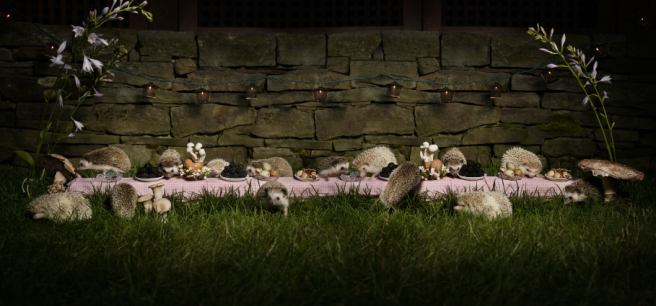 Admittedly, this last picture has nothing to do with Ophelia, except that it was shot by Claire Rosen (same photographer as the one above) and it is gloriously awesome. Rosen has an entire series of Fantastic Feasts with beasts, as well as a series of fairy tale-inspired images. They’re all lovely. Go take a look.
Admittedly, this last picture has nothing to do with Ophelia, except that it was shot by Claire Rosen (same photographer as the one above) and it is gloriously awesome. Rosen has an entire series of Fantastic Feasts with beasts, as well as a series of fairy tale-inspired images. They’re all lovely. Go take a look.
More in History of Pretty:
I love Alphonse Mucha
The most beautiful sculpture I have never seen.